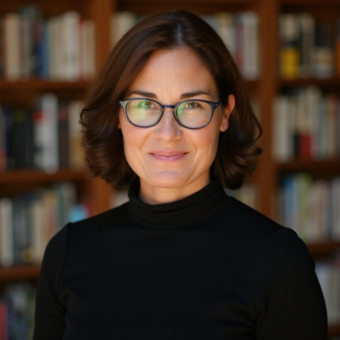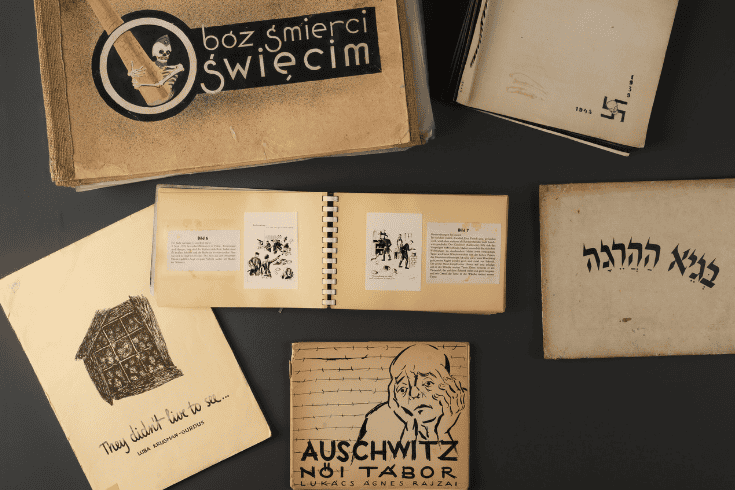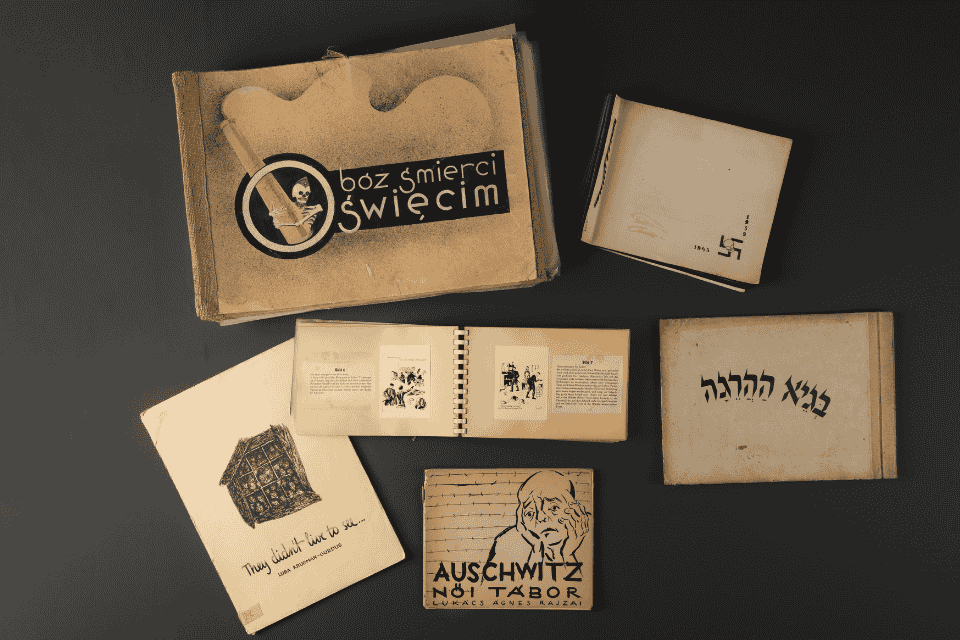Who Will Draw Our History? Women’s Graphic Narratives of the Holocaust, 1944-1949
Guest Curated by Rachel E. Perry, PhD
Opening: International Holocaust Remembrance Day, January 27, 2026
January 27, 2026 to April 30, 2026 | Kniznick Gallery
Between 1944 and 1949, scores of survivors created graphic narratives of their personal and collective experiences under Nazi persecution. Who Will Draw Our History? introduces ten Jewish women who survived Majdanek, Auschwitz-Birkenau, Ravensbrück, and outside the Warsaw ghetto under “Aryan” papers and then, days after their liberation, began recording their memories in images and words. Lacking photographs of what they witnessed and endured, they turned to visual storytelling to represent Jewish suffering during the Holocaust, particularly as it affected women.
This exhibition showcases their little-known “books of memories”: wordless novels, handmade albums, pictorial diaries, illustrated books and portfolios. Culled from private collections and museum archives around the world, these works contribute vital evidentiary material about the Holocaust, but they also reveal how the “return to life” was experienced and represented. In so doing, they radically transform how we understand the role and reach of art in early survivor publications, exhibitions, and community building.
Arriving at a crucial moment, as we near an age “after testimony,” Who Will Draw Our History? brings together these works of early Holocaust memory for the first time, placing them within their historical and cultural context.
We are deeply grateful to the Host Committee Chairs and individual members for generously supporting Who Will Draw Our History? Women’s Graphic Narratives of the Holocaust, 1944-1944. Their financial support has made it possible for us to to borrow, share, and responsibly steward important art loaned from collections around the world including the Ghetto Fighters’ House, Ravensbruck Museum, The Hungarian Jewish Museum, private collections, and others.
HBI will offer public programs as well as group tours for participants of all ages for this exhibition. For more information, please reach out to Cheryl Weiner, HBI Engagement Specialist.
 RACHEL PERRY received her doctorate in Art History at Harvard University and teaches visual culture in the Weiss-Livnat Holocaust Studies program at the University of Haifa and at Gratz College. Her research focuses on the representation and memory of the Holocaust and the Second World War in the visual arts of the immediate postwar period. She is the recipient of fellowships from the National Endowment for the Humanities, the Getty, the National Gallery, the Fondation pour la Mémoire de la Shoah, Yad Vashem, and the Memorial Foundation for Jewish Culture. Her articles have appeared in October, History and Memory, Holocaust Studies: a Journal of Culture and History, French Cultural Studies, RIHA, Art Bulletin and Ars Judaica, Images: A Journal of Jewish Art and Visual Culture, and Holocaust and Genocide Studies. As a curator, she has mounted exhibitions and authored catalogues such as Arrivals, Departures: Salvaged Art Works by Persecuted Jewish Artists in Paris at the Hecht Museum. She has published widely on visual ethics, Yizkor books, found footage, reproduction, reenactment, graphic novels and visual testimony. She recently edited a special issue of The Journal of Holocaust Research on early Holocaust exhibitions. Her current manuscript on which this exhibition is based is funded by the Hadassah-Brandeis Institute.
RACHEL PERRY received her doctorate in Art History at Harvard University and teaches visual culture in the Weiss-Livnat Holocaust Studies program at the University of Haifa and at Gratz College. Her research focuses on the representation and memory of the Holocaust and the Second World War in the visual arts of the immediate postwar period. She is the recipient of fellowships from the National Endowment for the Humanities, the Getty, the National Gallery, the Fondation pour la Mémoire de la Shoah, Yad Vashem, and the Memorial Foundation for Jewish Culture. Her articles have appeared in October, History and Memory, Holocaust Studies: a Journal of Culture and History, French Cultural Studies, RIHA, Art Bulletin and Ars Judaica, Images: A Journal of Jewish Art and Visual Culture, and Holocaust and Genocide Studies. As a curator, she has mounted exhibitions and authored catalogues such as Arrivals, Departures: Salvaged Art Works by Persecuted Jewish Artists in Paris at the Hecht Museum. She has published widely on visual ethics, Yizkor books, found footage, reproduction, reenactment, graphic novels and visual testimony. She recently edited a special issue of The Journal of Holocaust Research on early Holocaust exhibitions. Her current manuscript on which this exhibition is based is funded by the Hadassah-Brandeis Institute.
Exhibition Events

January 27, 2026
5 - 7:30 pm | Kniznick Gallery
Guest Curated by Rachel E. Perry, PhD
Olivia Baldwin, Rosalie and Jim Shane Curator & Arts Coordinator, Kniznick Gallery

